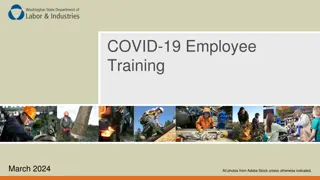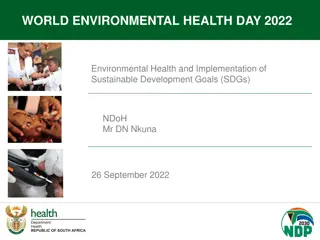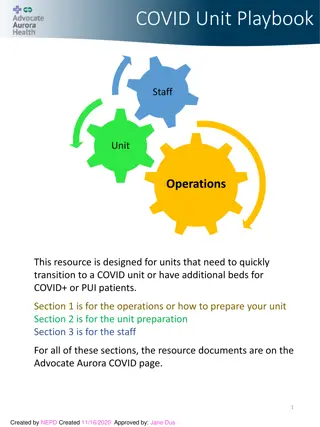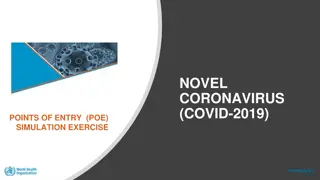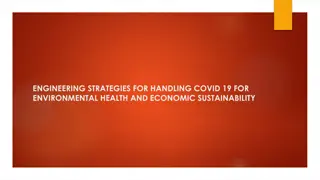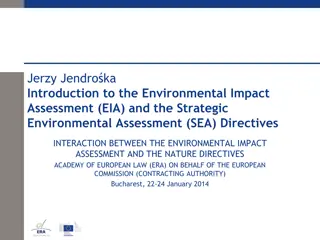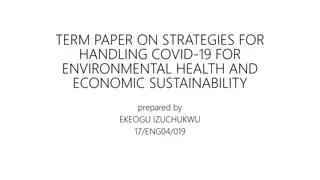
Understanding COVID-19 and Open-Source Ventilators
Learn about COVID-19, its symptoms, preventive measures, and the manufacturing of open-source ventilators. Discover how open-source ventilators can help in disaster situations and prevent future outbreaks.
Download Presentation

Please find below an Image/Link to download the presentation.
The content on the website is provided AS IS for your information and personal use only. It may not be sold, licensed, or shared on other websites without obtaining consent from the author. If you encounter any issues during the download, it is possible that the publisher has removed the file from their server.
You are allowed to download the files provided on this website for personal or commercial use, subject to the condition that they are used lawfully. All files are the property of their respective owners.
The content on the website is provided AS IS for your information and personal use only. It may not be sold, licensed, or shared on other websites without obtaining consent from the author.
E N D
Presentation Transcript
MATRIC NO: 17/eng04/046 Electrical/electronics engineering
A corona virus is a kind of common virus that causes an infection in your nose, sinuses, or upper throat. They re called coronaviruses because under a microscope, they look like a crown. Most corona viruses aren't dangerous. But in early 2020, after a December 2019 outbreak in China, the World Health Organization identified a new type of coronavirus. Officials named this new virus severe acute respiratory syndrome coronavirus 2 (SARS-CoV-2). This is the virus that causes COVID-19.
SYMPTOMS OF COVID-19 Trouble breathing Persistent pain or pressure in the chest New confusion or inability to arouse Bluish lips or face PREVENTIVE MEASURES Wash your hands frequently with soap or any other alcohol-based hand sanitizer. When sneezing or coughing, cover your nose and mouth with tissues; dispose of the tissues immediately after use. Don t come into close contact with an infected individual, anybody suffering from fever or exhibiting the typical symptoms. Cook your foods thoroughly, particularly meat and eggs, before consuming
MANUFACTURING MORE OPEN SOURCE VENTILATORS. PREVENT THE SPEAD INTRODUCTION OF THE USE OF ONLINE NARRATIVES TO CURB THE SPREAD OF COVID-19 3D PRINTING Prevent future outbreaks
An open-source ventilator is a disaster- situation ventilator made using a freely- licensed (open source) design, and ideally, freely-available components and parts. Designs, components, and parts may be anywhere from completely reverse engineered or completely new creations, components may be adaptations of various inexpensive existing products, and special hard-to-find and/or expensive parts may be 3D printed instead of purchased.[2][3]
-invasive ventilation uses face masks, nasal masks or mouthpieces -invasive ventilation uses face masks, nasal masks or mouthpieces
One of the major strategies in battling this virus is the manufacturement of open source ventilatorsOne of the biggest challenges faced by health workers around the world amid the coronavirus pandemic is trying to save lives when the number of patients needing critical care overtakes the available medical infrastructure. Countries with a large number of cases are struggling to meet the demand for supplies and equipment needed to arm those on the front lines against COVID- 19, the highly infectious respiratory disease caused by the virus.Ventilators - mechanical breathing devices - are crucial in the fight to save patients whose lungs are assailed by the virus.
With numbers of patients skyrocketing, stopping the spread of Covid-19 is an immediate concern. Multiple readers urged engineering companies to design, develop and manufacture more diagnostic kits, as well as improving logistics to distribute them quicker. Following criticism of the government s comparatively low level of testing, one member suggested engineers could install intelligent body temperature detectors at schools, supermarkets, etc . Other cutting-edge engineering could help lower infection rates. Cleaning solutions and material development with inbuilt anti-bacterial properties being developed into our design solutions would be positive, said Daniel Marsh.
As the COVID-19 coronavirus continues to spread, schools around the globe are shifting to online learning in an effort to slow the spread of the disease.Members of ISTE s professional learning networks have been hard at work identifying key practices for successful online learning. Here are some of the best ideas from educators from around the world, many of whom have already been teaching during coronavirus closures.
Ensure digital equity. Prepare and practice Provide clear expectations to staff and parents. Take time to plan. Establish daily schedules. Provide robust learning. Design independent learning. Address the emotional toll. Choose the right tools and stick with them.
Hospitals are scrambling to get ventilators, personal protective equipment, and other medical supplies. 3D printing can help this demand . In the short term face shields can be made then valves and swabs can be produced in the long term. ventilators can also be produce to help assist the demand .
Engineers should carry out a full assessment of medical equipment that might be required in similar situations, said Rich Pearson, to ensure that designs can be open-sourced and shared with manufacturers when needed. Industry itself should have a frank appraisal of its international activity to help prevent a repeat of this pandemic, said Paul Thurgood. Companies and employees might need to act differently in future. Hopefully this will be a wake-up call in many ways. This is an aggressive virus, but it could be that in future another one will show itself much more slowly, infecting many more people and with much more serious effects. Many of us engage far too much in international travel, with little regard for global warming. The virus is here in the UK solely because of this travel. The RT-PCR technique helps identify coronavirus infection accurately and within hours in both human and animal hosts. Using ionizing radiation, it identifies gene-expression during DNA repair and cell-cycle checkpoints like cell death (apoptosis). These data points tell scientists a lot about exposure and viral paths of transmission through populations
In conclusion in relation to the covid 19 pandemic, engineering could play a vital role in saving as much lives as possible. with more ventilators and masks being needed and have to be mass produced day by day, the engineering sector needs to work round the clock to provide the necessary numbers to make up for the current shortage. Also there reports of people using 3d printing technology to mass produce valve for ventilators, but manufacturing companies heavily warn against it for economical reasons. The is a possibility for 3d printing to be of major use here.

